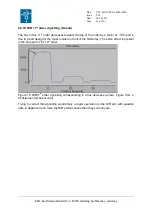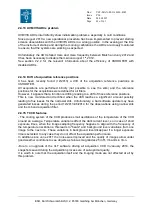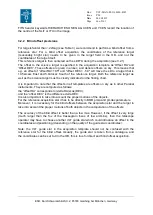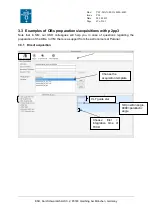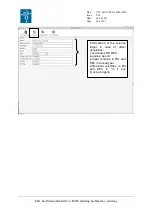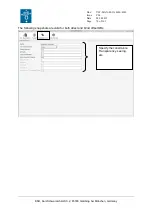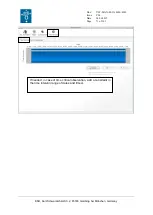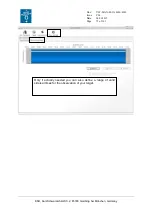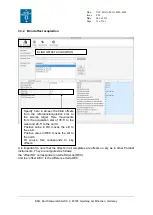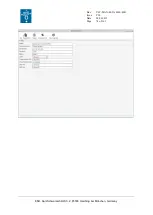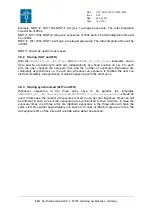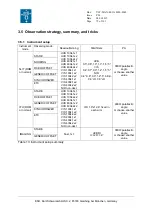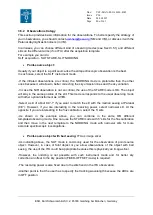
Doc:
Issue
Date
Page
VLT-MAN-ESO-14650-4942
P96
24.06.2015
75 of 161
ESO, Karl-Schwarzschild-Str. 2, 85748 Garching bei München, Germany
3.4 Spectroscopic observations
3.4.1 Overview and important remarks
3.4.1.1 Observing modes
X-shooter science templates support different observing strategies: staring (commonly used
for UV and visible observations), nodding along the slit (classical near-IR observations, for
SLIT only), offsetting to a fixed sky position (for extended objects) or lets the user free to
choose any sequence of offsets (e.g. for mapping). Note that due to the small field of view of
the IFU, we recommend to offset to a pure sky position in case good sky subtraction is
needed.
3.4.1.2 Effect of atmospheric dispersion
See section 2.2.2 for the update of the situation, unfortunately the ADCs have been disabled
due to their unreliability at night. Therefore the observations are conducted with the ADCs
fixed at the non deviation position for both the IFU and SLIT modes.
Obsolete: In SLIT mode, effects of atmospheric dispersion are automatically corrected in the
UVB and VIS arms thanks to the two ADCs. However they are fully working up to airmass 2.
For larger airmass the compensation is not perfect and above airmass 2.5 bad.
In
IFU mode however,
there is no correction for atmospheric dispersion
(the two ADCs come
after
the IFU in the light path and are set to their OFF position where they do not disperse
light). The user has to choose which wavelength will be kept fixed at the centre of the IFU
during observations using the SEQ.IFU.WLGT parameter in the
XSHOOTER_ifu_acq
template. It is set to the middle of the atmospheric dispersion range (470nm) by default.
Users are therefore recommended to orient the IFU parallel to the parallactic angle whenever
possible and should keep in mind that at high airmass, the amplitude of the dispersion is
larger than the 4” of the IFU field. Therefore we always recommend to specify a low airmass
for the observations (better than 1.5 should be enough).
3.4.1.3 Exposure time in the NIR arm
Only a limited choice of DIT values is allowed for the NIR observations in service mode. This
has been decided only on an operational basis, i.e. to avoid endless daytime calibrations. In
particular, there are no constraints for short NIR exposure (up to 300s), while only the
following selection is available in the case of longer exposure (≥ 300s): DIT=300, 480, 600,
900 and 1200 s. Note that the DIT=1800s is no longer offered as it has been verified that it
leaves remnants (see section 2.4.3). However, the minimum DIT is 0.66s.
The use of the NDIT different than 1, will give one “averaged” exposure internally of the DIT
integrations. The pre-processor of the system is averaging internally the NDIT individual DIT
integrations. The number of counts will only correspond to DIT but the noise will be reduced.
In case of blind offset
acquisition the coordinates
provided here do not concern
the science target but are
those of the
acquisition/reference star.
Ditto for the proper motions.

